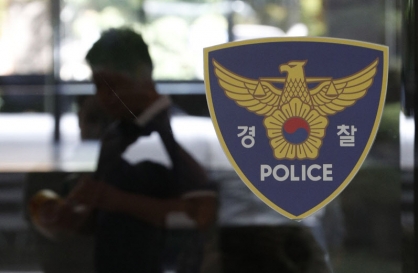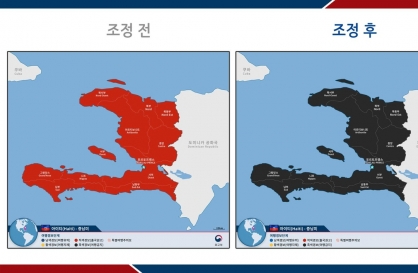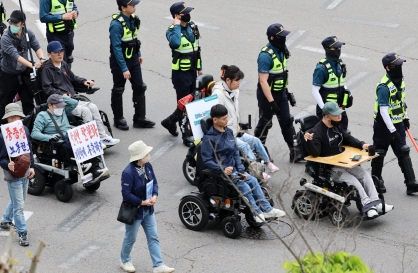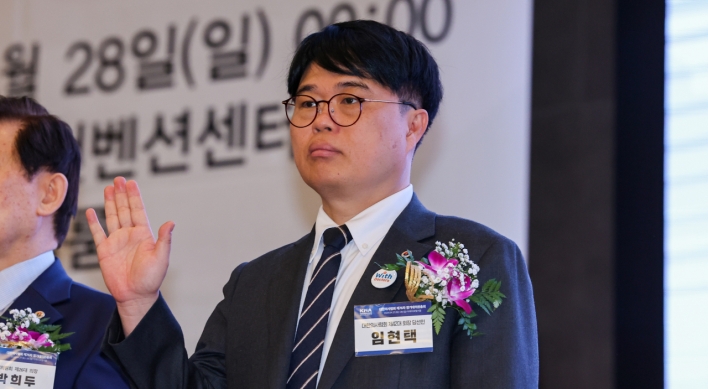Cultural content and IT products continue to dominate Samsung Economic Research Institute’s annual top 10 list of consumer favorites.
The 2012 list gleaned from experts and 19,701 Internet survey respondents evenly split services and products. Singer Psy’s “Gangnam Style,” the global sensation, was No. 1 favorite as nearly 90 percent of respondents included in their top 10 selection. It was followed by: k “Anipang,” a smartphone puzzle game; l 2012 Galaxy series smart devices; m vehicle black boxes; n London Olympics athletes; o energy drinks; p Long Term Evolution service; qpremium instant coffee packets; r Korean movies drawing over 100 million viewers; s camping.
Themes of top 10 hits
The year 2012 was characterized by low global growth, expanding social networking, and innovative technologies. These underscored three themes of the top 10 list: sharing, upgrading and escapism. Persistent economic weakness and uncertainty had consumers gravitate to low-cost gratification that could be shared and make them feel connected such as videos, movies and games on mobile devices. Products and services that satisfied upgrading desires gained attention, as did affordable products that offered an escape from daily stress and worries.
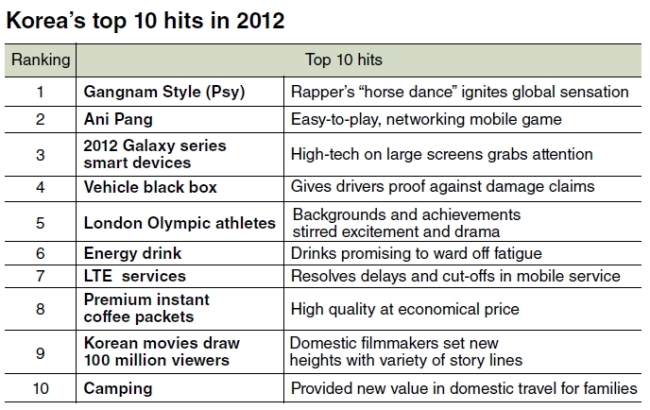
Sharing
In 2012, the “Gangnam Style” video by rap singer Psy became the most shared item around the world. In only four months, it became the No. 1 video in YouTube history with more than 900 million views and the subject of scores of parodies by people of all ages, nationalities and positions. Nothing coming out of Korea has lifted the nation’s cultural brand faster than the catchy beat, comedic style and easy-to-do “horse dance” of “Gangnam Style.” It did not matter that only a few words of the video were in English because it wasn’t really intended to be played outside the Korean market. Once the video hit social media, it became an instant hit.
“Anipang” (No. 2), a smartphone puzzle game that involves lining up three animals, gained massive popularity. “Anipang” was unusual because it is not just the younger generation that caught the bug. Others who usually frown on computer or video games were themselves enthralled by the game. The infectious attraction is that the game is easy to play and scores are shared in real time, spurring friendly competition. Also, the playing time is short, which makes it well suited for mobile devices.
Korean athletes in the London Summer Olympics (No. 5) drummed up more excitement, drama and suspense than any movie or drama. Korean Olympians won unexpected medals, enabling Korea to exceed its goals. Their strenuous efforts and personal stories proved hugely popular with the public. Fans cheered for fencing player Shin A-Ram, weightlifter Jang Mi-Ran, swimmer Park Tae-hwan, rhythmic gymnast Son Yeon-Jae and the Korean national soccer team, as they presented some of the most touching scenes.
This was also a milestone year in Korea’s film history. Big hits, including “The Thieves” to “Gwanghae: The Man Who Became King,” “A Werewolf Boy,” “An Introduction to Architecture” and “Pieta,” tugged on emotions with a wide range of storylines and led to Korean movies attracting an annual 100 million viewers here for the first time (No. 9). The results laid to rest worries of being overwhelmed by Hollywood movies when the government cut the screen quota on domestic films in 2006. The domestic film industry’s strenuous efforts to create unique stories showed it can compete.
Upgrading
Second, consumers showed keen interest in products that offered genuine upgrades. People responded more positively to innovative products rather than those with gradual improvements. Samsung Electronics’ Galaxy S3 and Galaxy Note 2 (No. 3) dominated the global smartphone market with large high-resolution screens as well as various functions and convenience. Galaxy S3 sales totaled 30 million units five months after its official release, and 5 million Galaxy Note 2 units were sold in its initial two months. These smart devices employed larger screens, user-interface technology and human technology designs. Advertisements featured lyrical scenes of ordinary life rather than emphasizing the functions, which also stimulated customers’ emotions.
LTE service (No. 7) became a global role model for next-generation wireless communications service as it drastically raised speed compared to 3G service. Korea’s mobile telecom operators built nationwide LTE networks, drastically expanding service areas and subscribers in a short time. The initial concerns that consumers would resist high service fees proved wrong.
The success of LTE services came by addressing consumer frustration with delays or sudden loss of mobile service with 3G. The rapid spread of smartphones and a flat-rate pricing for unlimited access led to a huge increase in data traffic and to delays in mobile service. LTE provides data up to 10 times faster than 3G service, resolving customer complaints in a single stroke.
Premium instant coffee packets (No. 8) offered taste and flavor superior to existing instant coffees, providing a high-quality coffee experience at an inexpensive price. Though slightly more expensive than existing instant coffees, they still cost one-tenth of coffee sold at coffee shops. With just hot water and a cup, people can enjoy coffee that gives coffee shops a run for their money. Premium instant coffee captured consumers by comparing favorably in price with coffee shops and favorably in quality with existing instant coffees.
Escapism
Finally, products that remove uncertainty and reduce daily stress grew in popularity. Vehicle black boxes (No. 4) appealed to consumers who want unambiguous proof of their driving. The device makes a video recording and collects operational data when a vehicle is in motion, providing peace of mind and a way to avoid costly accident payments. More than 2 million of them have been sold in Korea. Nearly 10 percent of all cars are registered with black box devices.
Energy drinks (No. 6) claimed to fight fatigue and restore alertness, and were very popular among young people. Recently, energy drinks like Hot 6, Red Bull and Burn Intense are even outselling Coca-Cola. This is likely due to rapidly increasing demand to combat fatigue and drowsiness and increase concentration as young people prepare for exams and search for a job.
Finally, ”camping“ (No. 10) provided new value in domestic travel, where people can escape the routine of their urban living and experience nature with their family and friends. Mountain climbing and golf are the traditional outdoor recreation activities. But the popularity of camping made big strides because of wider availability of modern services such as Internet access as well as bathrooms and stores. Thus, the base for camping culture is expanding, and camping is being seen as way to reset emotions and health.
In sum, consumers in 2012 looked to share enjoyment while pursuing genuine innovation, and developed strong interest in products that helped them resolve uncertainty and tension. In 2013, businesses probably will introduce more products that have value for consumers’ lives and change them for the better.
This article was contributed by Samsung Economic Research Institute. SERI has released Korea’s top 10 hits every year since 2000. ― Ed.
The 2012 list gleaned from experts and 19,701 Internet survey respondents evenly split services and products. Singer Psy’s “Gangnam Style,” the global sensation, was No. 1 favorite as nearly 90 percent of respondents included in their top 10 selection. It was followed by: k “Anipang,” a smartphone puzzle game; l 2012 Galaxy series smart devices; m vehicle black boxes; n London Olympics athletes; o energy drinks; p Long Term Evolution service; qpremium instant coffee packets; r Korean movies drawing over 100 million viewers; s camping.
Themes of top 10 hits
The year 2012 was characterized by low global growth, expanding social networking, and innovative technologies. These underscored three themes of the top 10 list: sharing, upgrading and escapism. Persistent economic weakness and uncertainty had consumers gravitate to low-cost gratification that could be shared and make them feel connected such as videos, movies and games on mobile devices. Products and services that satisfied upgrading desires gained attention, as did affordable products that offered an escape from daily stress and worries.

Sharing
In 2012, the “Gangnam Style” video by rap singer Psy became the most shared item around the world. In only four months, it became the No. 1 video in YouTube history with more than 900 million views and the subject of scores of parodies by people of all ages, nationalities and positions. Nothing coming out of Korea has lifted the nation’s cultural brand faster than the catchy beat, comedic style and easy-to-do “horse dance” of “Gangnam Style.” It did not matter that only a few words of the video were in English because it wasn’t really intended to be played outside the Korean market. Once the video hit social media, it became an instant hit.
“Anipang” (No. 2), a smartphone puzzle game that involves lining up three animals, gained massive popularity. “Anipang” was unusual because it is not just the younger generation that caught the bug. Others who usually frown on computer or video games were themselves enthralled by the game. The infectious attraction is that the game is easy to play and scores are shared in real time, spurring friendly competition. Also, the playing time is short, which makes it well suited for mobile devices.
Korean athletes in the London Summer Olympics (No. 5) drummed up more excitement, drama and suspense than any movie or drama. Korean Olympians won unexpected medals, enabling Korea to exceed its goals. Their strenuous efforts and personal stories proved hugely popular with the public. Fans cheered for fencing player Shin A-Ram, weightlifter Jang Mi-Ran, swimmer Park Tae-hwan, rhythmic gymnast Son Yeon-Jae and the Korean national soccer team, as they presented some of the most touching scenes.
This was also a milestone year in Korea’s film history. Big hits, including “The Thieves” to “Gwanghae: The Man Who Became King,” “A Werewolf Boy,” “An Introduction to Architecture” and “Pieta,” tugged on emotions with a wide range of storylines and led to Korean movies attracting an annual 100 million viewers here for the first time (No. 9). The results laid to rest worries of being overwhelmed by Hollywood movies when the government cut the screen quota on domestic films in 2006. The domestic film industry’s strenuous efforts to create unique stories showed it can compete.
Upgrading
Second, consumers showed keen interest in products that offered genuine upgrades. People responded more positively to innovative products rather than those with gradual improvements. Samsung Electronics’ Galaxy S3 and Galaxy Note 2 (No. 3) dominated the global smartphone market with large high-resolution screens as well as various functions and convenience. Galaxy S3 sales totaled 30 million units five months after its official release, and 5 million Galaxy Note 2 units were sold in its initial two months. These smart devices employed larger screens, user-interface technology and human technology designs. Advertisements featured lyrical scenes of ordinary life rather than emphasizing the functions, which also stimulated customers’ emotions.
LTE service (No. 7) became a global role model for next-generation wireless communications service as it drastically raised speed compared to 3G service. Korea’s mobile telecom operators built nationwide LTE networks, drastically expanding service areas and subscribers in a short time. The initial concerns that consumers would resist high service fees proved wrong.
The success of LTE services came by addressing consumer frustration with delays or sudden loss of mobile service with 3G. The rapid spread of smartphones and a flat-rate pricing for unlimited access led to a huge increase in data traffic and to delays in mobile service. LTE provides data up to 10 times faster than 3G service, resolving customer complaints in a single stroke.
Premium instant coffee packets (No. 8) offered taste and flavor superior to existing instant coffees, providing a high-quality coffee experience at an inexpensive price. Though slightly more expensive than existing instant coffees, they still cost one-tenth of coffee sold at coffee shops. With just hot water and a cup, people can enjoy coffee that gives coffee shops a run for their money. Premium instant coffee captured consumers by comparing favorably in price with coffee shops and favorably in quality with existing instant coffees.
Escapism
Finally, products that remove uncertainty and reduce daily stress grew in popularity. Vehicle black boxes (No. 4) appealed to consumers who want unambiguous proof of their driving. The device makes a video recording and collects operational data when a vehicle is in motion, providing peace of mind and a way to avoid costly accident payments. More than 2 million of them have been sold in Korea. Nearly 10 percent of all cars are registered with black box devices.
Energy drinks (No. 6) claimed to fight fatigue and restore alertness, and were very popular among young people. Recently, energy drinks like Hot 6, Red Bull and Burn Intense are even outselling Coca-Cola. This is likely due to rapidly increasing demand to combat fatigue and drowsiness and increase concentration as young people prepare for exams and search for a job.
Finally, ”camping“ (No. 10) provided new value in domestic travel, where people can escape the routine of their urban living and experience nature with their family and friends. Mountain climbing and golf are the traditional outdoor recreation activities. But the popularity of camping made big strides because of wider availability of modern services such as Internet access as well as bathrooms and stores. Thus, the base for camping culture is expanding, and camping is being seen as way to reset emotions and health.
In sum, consumers in 2012 looked to share enjoyment while pursuing genuine innovation, and developed strong interest in products that helped them resolve uncertainty and tension. In 2013, businesses probably will introduce more products that have value for consumers’ lives and change them for the better.
This article was contributed by Samsung Economic Research Institute. SERI has released Korea’s top 10 hits every year since 2000. ― Ed.
-
Articles by Korea Herald







